
And, Facebook generates $1.4 million in ad revenue every hour!
That’s a whole lot of money us digital marketers are pouring into Facebook ads in hopes of ad conversions.
Wouldn’t you like to get a bigger share of the multi-million dollar pie you’re paying into your Facebook ads?
Here’s 5 fantastic strategies you can apply – right now – to optimize your Facebook ads – and get some of that multi-million dollar ad revenue coming right back at you.

Often, marketers create Facebook ads that look good, but don’t fully take into account the full funnel experience for visitors.
For a Facebook ad to be most effective, it needs to not only capture viewers’ and make them want to click on the ad. The ad imagery and text also needs to be congruent with what users expect to see after clicking on the ad.
There needs to be a “message to market match.”
In other words, there should be continuity between the ad and the onsite experience so visitors can quickly find exactly what intrigued them within the ad.
Otherwise, if the experience isn’t consistent from the ad to the linked page visitors click to, prospects may think they’ve landed on the wrong site. Or, loose interest because they don’t immediately see the product they were after in the first place.
Here’s a real-life example of a Facebook ad done by one of my clients – before I suggested they optimize it.
As you can see, their Facebook ad showed several pictures of attractive-looking, colorful socks:

However, when users clicked the ad – presumably because they liked a specific pair of socks they saw within the ad – they arrived on a landing page with a hero image that looked like this:

Notice how none of the socks shown in the ad were reflected in this hero image.
There was no “message to market match.”
The product imagery featured in the ad was not congruent with what appeared after the user clicked on the ad and landed on the site.
Upon clicking the ad – and landing the site – shoppers wanting a specific sock design shown in the ad had one of two choices:
Can you guess what most users did?
They bounced!
In fact the client’s analytics data showed Facebook ad traffic was the largest, but heaviest bouncing traffic source.
Shoppers, undoubtedly, went from happy and excited about the product to confused, upset, or overwhelmed by the daunting task of having to search through dozens of sock styles just to find the ones that had captured their interest in the first place:

Shoppers are clicking on your ad because something in it has piqued their interest — whether it’s the thumbnail image, copy, or combination of both.
If you don’t show the item displayed in the ad to them right away, after they click on the ad, you risk losing them.
To optimize your ad, assess if your imagery and copy is congruent with what shoppers expect they’ll see when landing on the page, linked from your ad.
Test the effect of creating a message to “market match” by making the ad content mirror what’s on the page linked from the ad.
For example, if your Facebook ad uses the wording “best sellers,” ensure there’s a “best sellers” category that can be quickly and easily seen when shoppers arrive on your landing page.
Or, if your ad shows a specific product, make sure shoppers can easily find that product as soon as they click into your funnel.
Test the effect of applying this suggestion. Then, share your results on GuessTheTest.com

One of the best ways to get a leg up on your competitor’s is to see exactly what they’re doing.
Platforms like SEMRush and SpyFu are great analysis tools for benchmarking your competitor’s performance and seeing what keywords work well for them.
You can then take this insight and apply the same principles to optimize your own site performance.
Wouldn’t it be great if there were a similar way to “spy” on your competitor’s Facebook ads?
Turns out there is! And, it’s built right in to Facebook.
If you’d like to compare your Facebook ads to your competitors, you can quickly and easily view all your competitors’ ads by typing in this URL: https://business.facebook.com/pg/CompetitorName/ads/
Just substitute /CompetitorName/ for the name of the company whose ads your want to view.
Analyze and assess your competitors’ ads, looking at the wording and imagery they’re using. Test the effect of applying some of their pictures and prose to your ads and monitor performance.

According to Facebook Ads Expert, Amanda Crangle, of Lamp Light Social, one of the best things you can to optimize your Facebook ad performance is to minimize distraction.
That means removing any unnecessary elements on the page linked from your ad so users have no choice, but to focus on the one very specific Call To Action (CTA) you’re giving them.
To minimize distraction, Amanda recommends you don’t link an ad to your website Homepage. Rather, you create a separate landing page that users arrive on, after clicking your Facebook ad.
That landing page should only contain three elements:
And, that’s it!
The reason why a separate landing page works best is because a typical website has multiple, competing CTAs – even if you don’t immediately realize it.
For example, on GuessTheTest.com, the primary CTA is pretty obvious: users are encouraged to take their best guess on the Featured Test.

But, a person might also be tempted to learn more “About” the site, explore the Glossary – featuring dozens of A-Z digital marketing terms – search for a specific test, and sign-up to receive free, weekly content.

If arriving from a Facebook ad, these multiple, competing CTAs could distract the user.
A page with multiple Calls To Action (CTAs) can be so distracting, the user won’t know what or where to click on. So, simply won’t click at all.
Here’s a great example of a real-life website that, in my opinion, has way too many multiple, competing CTAs:

Um. . .which button would you click on!?
Extreme example, but a Facebook ad leading to this page probably wouldn’t perform too well. . .
In contrast, this landing page for Ted McGrath’s Six Figure Seminar business– that you reach after clicking his Facebook ad – looks great since there’s really only one main Call To Action: download now.

Quite simply stated, distracted users don’t convert. They’re too busy doing everything else – except attending to your primary offer.
Distraction isn’t just an onsite experience.
The user’s environment may also create distraction. Viewers may arrive at your site on a busy train, while commuting home. Or, quickly be checking your page while others are buzzing around them in the office.
While we marketers don’t have much ability to impact whether our users are in a distracting environment, we can change the distractions we present on site. The most effective way to minimize distractions is to create a Facebook ad that brings users to a simple landing page, showcasing your primary CTA.
To easily create clean landing pages, consider using a site like ClickFunnels or Unbounce, Instapage, or LeadPages which have nice, clean and minimal templates ready for you to use – and convert.
And, in case you’ve heard the buzz about Facebook soon offering “Lead Ads” to generate leads directly on Facebook, here’s a good article explaining some of the pro’s and con’s.

Video marketing is all the buzz and its popularity translates to Facebook ads, too.
According to this study, Facebook viewers gazed at video content 5 times longer that static content. And as this article states, video ads receive 10-30% more views than static images.
I’ve combed the Internet to find an opposing argument, showing that static images work better – but didn’t come across any tangible proof.
So, based on these stats, it seems video is the way to go with Facebook ads.
Not everyone has the ability to create a super polished, professional Facebook video ads. But, that’s okay. I’ve worked with some small business owners who have wrangled together video clips, put them into an ad format, and have seen the conversions roll in.
That said, simply creating a video ad won’t be a magic bullet, if it’s not optimized. Here’s a few optimization and testing suggestions to consider:
Video ads on Facebook seem to work wonders and consistently outperform static images. Optimal video ads are square and are about a minute, or so, long. Test the best images, length and format that converts best with your audience. Then, share your results on GuessTheTest.com

According to a study by Buffer, which analyzed 43 million Facebook posts, and a different study by AdEspresso which analyzed 752,626 Facebook Ads, 5 is a magic number on Facebook.
According to AdEspresso, the optimal Facebook ad headline length is 5 words.
AdEspresso says that, “A clear, no-nonsense (and 5-word) headline — like “See how Facebook is changing,” paired with 20 words of ad text –is the recipe for a perfect Sponsored Post.” Here’s an example of a catchy 5-word headline:

So, if a 5-word headline is the perfect length to grab your audience’s attention and generate interest in your ad, what’s the optimal CTA wording to get user’s to convert?
According to AdEspresso, there are, you guessed it, 5 words that work best for your CTA.
These words are:
Interestingly, this chart by AdEspresso shows, the best performing CTAs have changed over time, as audiences get used to and tire of certain prompts:

Analysis of these current top-performing CTAs shows, in general, “low friction” words that don’t put too much pressure on the prospect seem to work best, in most contexts.
As well, simple, clear CTAs that start with verbs like, “learn, shop, book, etc.” seem to perform well.
However, keep in mind, the CTA that will work best for you is based on your unique product or offering. Trying a CTA that’s different from all the other ads may help your ad standout and convert. It’s always best to test.
Alright, so you’ve got a great headline and a clear, strong CTA for your Facebook ad. What magic words should you use in your copy to convert?
Turns out, there’s 5 of them!
They are:
These words are proven to capture interest and attention. But, do be careful using these words. Be sincere and don’t overuse them.
For example, the now bankrupt retailer, Sears, used to have an ad that said, come on down to your department store. The use of the word your in this sentence comes across as forced and inauthentic. It makes the customer go, “hey, I never declared Sears as my store,” resulting in the audience discounting the message.
The word new can be equally problematic. In a talk I heard by renowned psychologist, Robert Cialdini, he cited how removing the word new from a magazine ad helped spike sales of audio equipment because it gave people assurance the technology was well-established and had a long-standing reputation. Removing the word “new” made the product appear more to be time-tested, long-standing, and trustable.
So, choose your words wisely. And, always test the best copy to increase your conversions.
Alright, so you’ve got your headline down, your CTA optimized, and your ad copy perfected.
What other elements will help you create a perfect Facebook ad?
Human psychology would say, you need to understand your users’ behavior and what motivates them into action. This line of thinking is especially true if you want people sharing your ad.
According to the Science of Social Media’s podcast, there’s 5 reasons people share online:
Keeping these 5 principles in mind, you can tailor your ad copy to tune most into these needs, motivating your prospects to take action.
Just for fun, here’s the fifth and final five figure on Facebook for you: according to Buffer, the optimal number of times to post on Facebook is 5 times per day.
Buffer reports that brands posting 5 times per day received the highest level of engagement on their posts.
So, high five to you, if you’re brand is aggressively posting five times per day.
Help spread the word. Why not share this article and post it five times! ☺
Then, give GuessTheTest a 5-star review.

A primer explaining the 4 different types of tests you can run, what they mean, and how you can use each to improve your competitive testing advantage.
One of the most debated testing topics is how large does my sample size need to be to get trustworthy test results? Some argue samples of more than 120,000 visitors per variant are needed to begin to see trustworthy test results. Ishan Goel of VWO disagrees. What does he think is needed to get trustworthy test results? Listen to this webinar recording to find out.
To get users clicking your content, which format works best: buttons or links. A series of 8 real-life A/B tests suggests one format consistently outperforms. Can you guess which version wins? Checkout the mini meta analysis to find out.

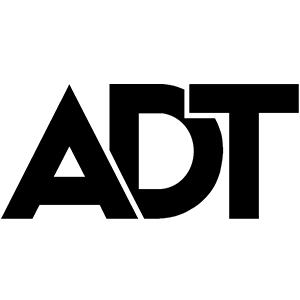
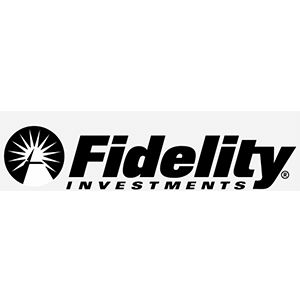


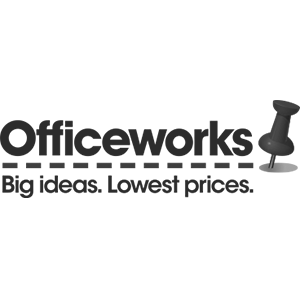
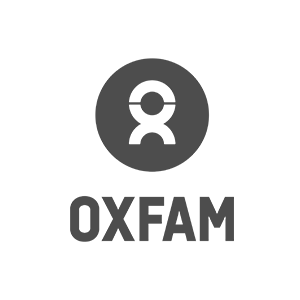

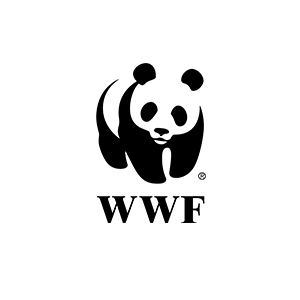





As a professional content creator working for a Digital Marketing, I know that 50% of success on Facebook comes from creative. Ensuring it's tested, optimized and scaled.
We put extra effort in developing the dynamic content pieces for Facebook ads to make sure even enterprise-size clients keep experiementing and improving every month!
That's a great point. The creative is so important. Testing to ensure its optimal is what gives you a major advantage over many competitors.